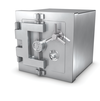Multitool
ZuluCrypt is an easy-to-operate graphical front end that is suitable for encrypting files, partitions, and drives with LUKS, TrueCrypt, VeraCrypt, and dm-crypt. ZuluCrypt cannot handle a complete encryption of the entire system, but it is able to scramble system partitions.







